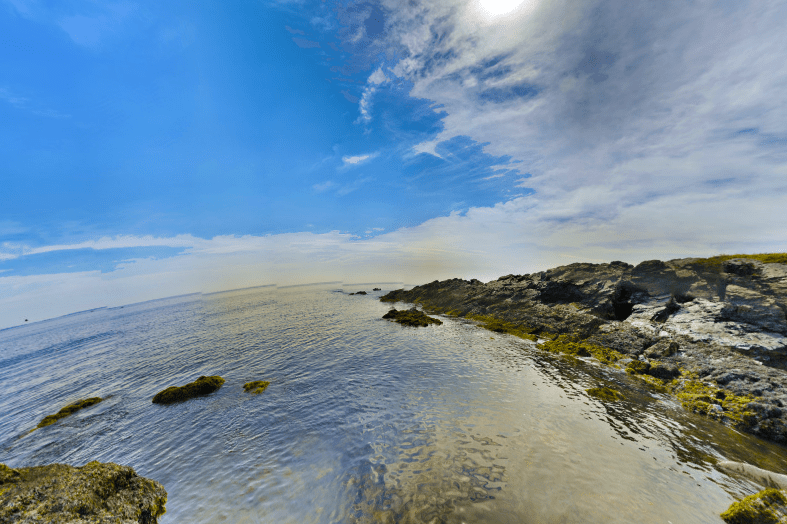Explore the seashore without taking a day off from work

Every now and then I’ll get word of a faculty or student project that feels a bit like getting a surprise cupcake delivered to my email inbox. Not only is it totally sweet, it’s also got some kind of icing on top that makes it perfect for iNSolution. Alan Mislove’s Twitter map was one, as was Lisa Feldman Barrett’s science of emotion haunted house. Today’s surprise cupcake comes from Brian Helmuth’s lab at the Marine Science Center.
Helmuth uses mathematical and computational models to forecast where and when climate-change related impacts will show up in the marine environment, as well as how severe they will be. In order to do this, his team needs to collect oodles of real-time, location-based data to understand specific habitats and species. Working in the intertidal zones of places like Oregon, Panama, South Carolina, and China, just to name a few, Helmuth and his team have deployed devices which they call “robomussels” all around the global seacoast. These little babies record data like sea level changes, water and air temperature, and solar radiation, all of which the team combines to paint a realistic and timely picture of the local environment.
Another piece of the team’s work is based on observational data: counting the number of individuals of a certain flora or fauna species located on a particular boulder on the shores of Palermo, Italy for example. With dozens of research sites around the world, one wonders how the guy keeps up. Well, turns out robomussells aren’t the only mind-blowing technology Helmuth uses to keep tabs on these places. He’s also set up Gigapan cameras at many of the locations which allows him and his team to look very closely at a coastline thousands of miles away. And this, friends, is the cupcake.
What began as a research tool happens to double as a phenomenal work of interactive, digital art of sorts. You can explore the shores of Nahant, Mass. where the Marine Science Center lives, clicking on hidden treasures in the pictures like a beautiful bed of Ascophyllum nodosum (aka, rockweed) or a G-Force logger recording the direction and force of water movement at high tide. You can search for sloths in the forests of Panama, wander a riverbank in the Netherlands, or take in a sunset in the Shenandoah Valley.
These “virtual tours” and many more now live on Helmuth’s lab website, thanks to the efforts of senior lab technician Francis Choi, along with a couple interactive maps noting the locations of various devices being used by Helmuth and his colleagues at the MSC and in Oregon.
Helmuth has plans to deploy the awesomeness at local k-12 schools, giving kids the chance to explore weather, climate, data collection, and analysis in a hands-on manner.
Just to give you a little taste of things, here’s the tour of Nahant:






